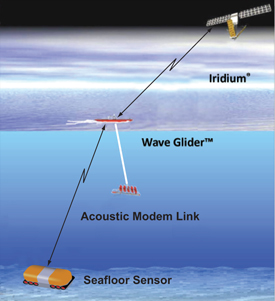The National Science Foundation has awarded the Scripps Institute of Oceanography a grant worth $1.02 million for developing an advanced seismic system. The project is also supported by Liquid Robotics and the Cecil H and Ida M Green Foundation for Earth Sciences, raising the total value of the project to $1.46 million.
 Wave Gliders will serve as communication gateways for transmitting live seismic data
Wave Gliders will serve as communication gateways for transmitting live seismic data
The team of researchers at the Scripps Institute, headed by Jonathan Berger, a geophysicist and the co-principal investigators Jeffrey Babcock and John Orcutt will design a transformative system that will incorporate seafloor seismometers and transmit the data by integrating a green technology that is capable of navigating the ocean floors in order to gather critical earthquake information throughout the globe.
The Wave Glider technology developed by Liquid Robotics uses an unmanned vessel of the size of a surfboard, which is powered by solar power and wave energy. Jonathan Berger stated that with the integration of the Liquid Robotics technology with the ocean bottom seismometer developed by Scripps Institute, with global network technologies available, researchers will gain not only seismic data but also other ocean bottom observations can be made in a sustainable and affordable manner since it does not require manpower or fuel.
The transformative system will provide real-time data for various applications such as deep Earth structure and dynamics, earthquake monitoring and tsunami warning systems. After navigating to a specified location, the Wave Glider will function as a communications gateway after linking with the ocean bottom seismometer and relay real-time seismic data. It is a faster alternative to traditional systems, which are deployed by ships and retrieved only upon the return of the ship.
The seismic data will be integrated into a seismographic network operated by Cecil H and Ida M Green Institute of Geophysics and Planetary Physics to help researchers gain a better understanding of earthquakes and the interior structure of the planet.
Investigators Orcutt and Berger stated that the seismographic system will prove beneficial in tsunami warning systems as it will aid in quickly estimating the size and location of the displaced seafloor.